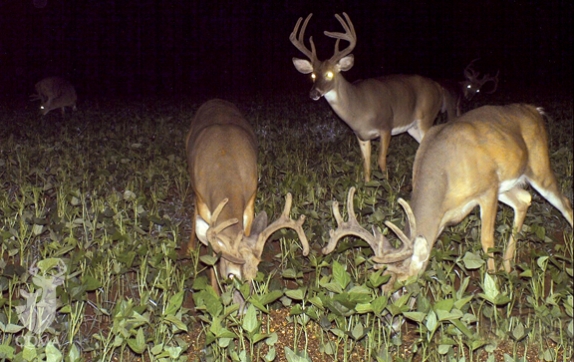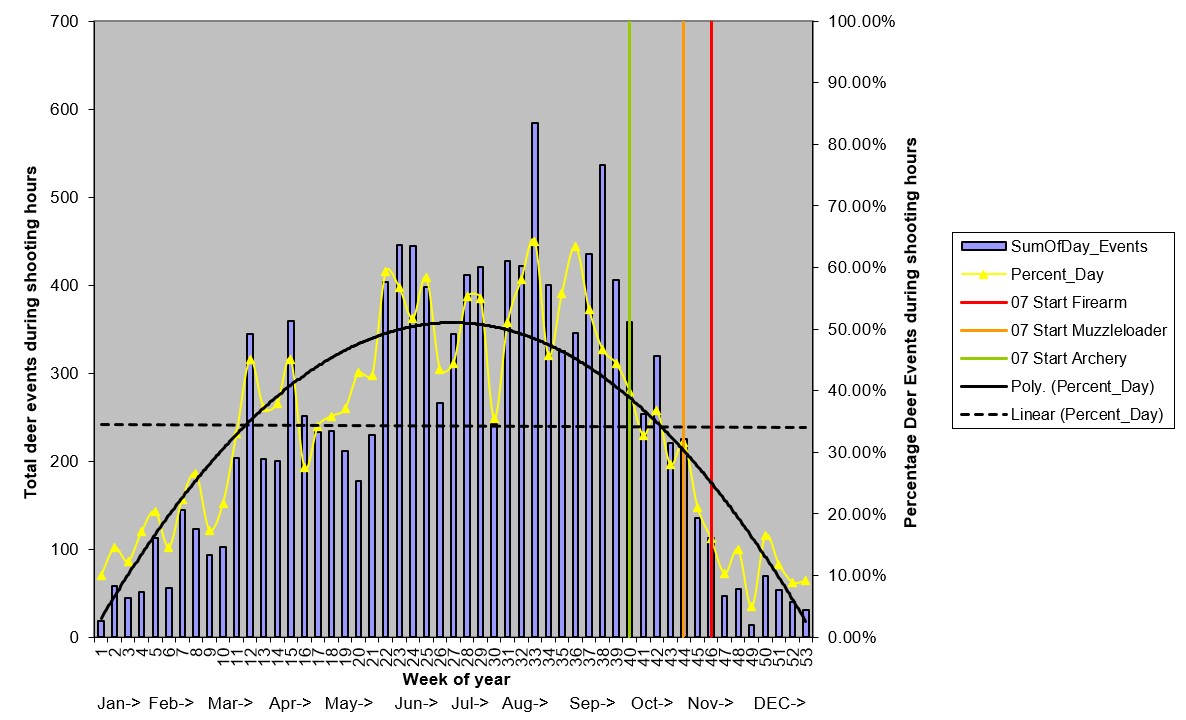Didn't really address my question, but a great video. I always enjoy MSU deer lab stuff.
On this "nocturnal" buck issue, I think it is largely semantic. I don't think anybody actually thinks bucks are nocturnal in a literal sense that the only move at night and stay in a bed all day. I think what most folks, including me, mean when we say deer go nocturnal under hunting pressure, is that deer become more secluded during daylight hours. When we say the move less during the day, we don't mean they necessarily move less often, but cover less area when they move.
This conversation goes to another general point I've been making from a habitat improvement perspective. Our timber management has had the most long-term positive impact on our deer, largely because of scale. It has benefited deer greatly, but made hunting much more difficult. Here is how:
When we started roughly 1/2 of our property was a pine desert with a closed canopy and the rest was younger pines just beginning to close the canopy. We had lots of deer but the food was drying up fast and our food plots were like an emergency room visit for the deer. Deer would come out in a clover field while I was mowing it because they needed food that bad. Deer bedded largely on a neighboring property with a very high stem count and moved to our high quality food plots in general. In years with poor acorn crops, deer would abandon our hardwood riparian buffers completely. They would move from bedding to our high quality food plots regularly. They were easy to kill over food or in the travel corridors between bed and food. They were only hard to kill in good mast crop years. They would bed in the riparian buffers where they could see you coming for a long distance. They would stand up and move a few tens of yards during the daylight eating acorns and then lay back down. They would wait until after dark to move to the food plots.
With our timber management, we have created and maintained young clear-cuts with fire. Exactly they kind of bedding they describe in the video. Deer now react to hunting pressure much more. Sure, does always made it to food plots long before mature bucks, but previously you could catch mature bucks between bedding and food. Now, there is so much quality food in the bedding areas they don't leave them until after dark. This means that outside the rut, you pretty much have to hunt bedding areas if you want an opportunity at a mature buck. Of course this changes the equation in favor of the buck even more. Here, archery season comes first and muzzleloader overlaps the rut. The best you can do is to hang a treestand on the edge of a clear-cut, hunt the right wind, and hope you don't get caught climbing in. Then you have to hope a buck comes close enough to the edge for a shot.
Bottom line, when I use the term "deer going nocturnal", I'm referring to the amount and location of movement during the day versus the night. A number of years ago, I produce the following chart using a wireless camera network that runs 24/7/365:
It contains about 5 years worth of camera data. The graph is a bit complicated, but here are the important points:
The vertical Green, Orange, and Red lines represent the beginning of Archery, Muzzleloader, and General Firearms seasons. Our general Firearms season runs through the end of the calendar year roughly. The yellow curve represents the percentage of total deer pictures collected during shooting hours (1/2 hour before sunrise to 1/2 hour after sunset). Let's start in the middle of the graph. There is some variability but in general, the yellow curve show daytime pictures at their highest during the summer. Note the significant drop begins in the last half of September. This is when most of our hunter go into the field to set stands and stuff. Of course there are seasonal food source shifts in play as well. The drop continues at about the same rate and plunges for the rest of the year. We go from a high of just over 60% in the summer to a low of 5%-15% from the beginning of muzzleloader through firearm season. Deer don't recover immediately when the pressure leaves. You can see that it takes until about mid-March for the percent of day time pictures to recover to 30% or better.
This kind of data has been quite useful when talking with our hunters. We also record hunter observations for each hunt. Their observations also decline from the beginning of archery through muzzleload and drop dramatically during firearms. Based on their ad hoc observations many believe deer numbers are declining when they don't see deer during the season. When I show them that our total deer picture counts are not declining and show them the above chart indicating most pictures are at night, they under stand deer have gone "nocturnal".
Again, what is really happening here is that deer are not really nocturnal in a technical sense, but just limiting their movement during shooting hours and thus, passing in front of cameras less frequently during the day and more frequently during nighttime.
Thanks,
Jack

deerassociation.com

